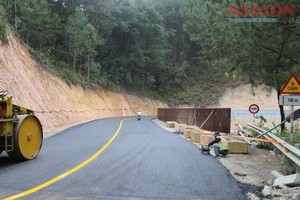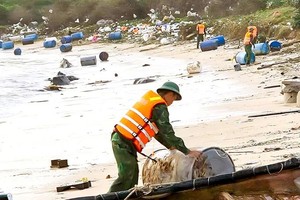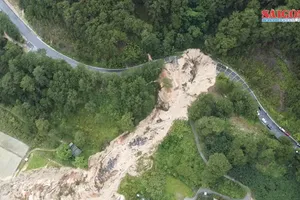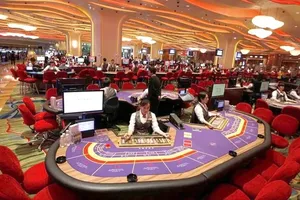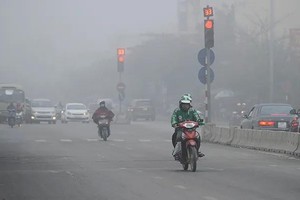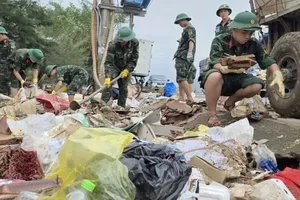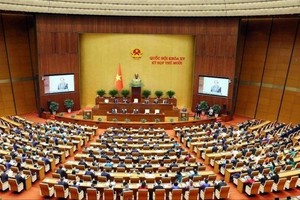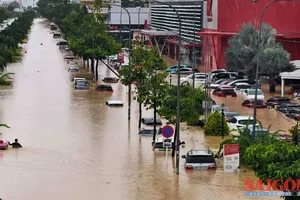Chairman of the Government Office Mai Tiến Dũng today announced that the Taiwanese Hưng Nghiệp Formosa Hà Tĩnh Steel Corporation was responsible for the massive fish deaths in several central Vietnamese provinces in the past few months.
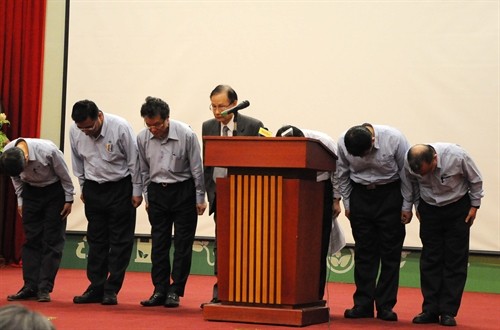
He told a news conference yesterday in Hà Nội that Formosa had released toxic wastewater into the sea along these provinces.
“Based on the result of careful inspections and consultancy with international scientists, we came to the conclusion that violations in the construction and testing operation of the Formosa Hà Tĩnh Steel plant are the cause for serious pollution killing a massive amount of fish in these central provinces,” he said.
He also said that Formosa had admitted responsibility for the fish deaths and committed to publicly apologising for such violations.
Dũng said Formosa Hà Tĩnh would also have to pay US$500 million to compensate affected people, help fishermen find new jobs as well as to pay for clean-up works and to recover the sea environment.
The company’s chairman, Chen Yuan Cheng, apologised in a film clip shown at the news conference and said he accepted full responsibility.
“We take responsibility for the incident and deeply apologise to the people of Việt Nam, particularly the residents of Hà Tĩnh, Quảng Bình, Quảng Trị and Thừa Thiên – Huế provinces. We would also like to apologise to the Party, the Government, the National Assembly and the Prime Minister of Việt Nam for causing such an environment incident which has seriously affected the livelihood of these residents,” Chen said.
Chen also said that Formosa had committed to improve its wastewater treatment system and ensure proper treatment of toxic waste before discharging to the environment in line with Việt Nam’s requirements.
“We will co-operate with Vietnamese authorities and the central provinces to develop a solution to monitor the central region’s sea environment and to make sure that there will be no environmental incidents similar to what happened,” he said.
“We commit to not repeat violations regarding environmental protection and water resources in Việt Nam.”
“We deeply hope the Vietnamese people can forgive us".
In a letter sent to his staff, which was written in Vietnamese and published just hours before the press conference, Chen said that the investigation led by Việt Nam’s environment ministry found that subcontractors’ faults during the trial phase of operation had killed the fish.
“We respect the Government’s investigation results and are co-operating with the authorities to handle and mitigate the consequences,” he said in the letter.
Why $500 million?
Minister of Natural Resources and Environment Trần Hồng Hà said the amount of $500 million was calculated based only on economic damages.
“Much more damage has been done to the sea environment, while emotional damage to local residents and other consequences can’t be put on the scale,” he said.
“But what we want is not money, we want Formosa and their stakeholders to understand that they have to be responsible for what they cause in Việt Nam,” he added.
The Vietnamese Government, however, did not provide figures on the exact number of fish dead and economic losses of the four provinces affected in the disaster.
The Ministry of Science and Technology led the investigation work in collaboration with the Việt Nam Academy of Science and Technology, joined by more than 100 Vietnamese and international scientists, analysts and experts over the last three months. They managed to identify a big source of wastewater in Vũng Áng.
“The wastewater moved along the sea current, taking the oxygen out of the water and causing toxicity wherever it went,” Hà said.
“The conclusion was reached via images taken from the seabed and satellites”.
Lawsuit against Formosa?
Dũng said in the press conference that the Vietnamese Government still had to consider whether to bring Formosa to court.
“Việt Nam is determined to investigate and find the real culprit, Formosa, in this case,” he said.
Dũng, however, added that Formosa “has apologised to the Vietnamese people and committed to compensate” for its actions, and Việt Nam has a tolerance-oriented policy towards law-breaking foreign companies which readily admit their violations.
Media access
Confronted by the media on whether or not the Government had intentionally blocked information access to the mass fish death after the incident happened, Information and Communication Minister Trương Minh Tuấn said that media investigation could not replace a comprehensive one by scientists and law enforcement forces in such a complicated case.
Since the incident took place, only three press conferences – including today’s to announce the final cause – were held by the Government in response to the fish death. The media had little access to what had happened and what the Government was doing to handle the environmental crisis.
“There were times the Government asked the media to stop reporting unproven news lest it hindered the investigation work,” Tuấn said.
Ha added that if the Government provided all the information they had, there would be no “weapons” left to battle the culprit.
The mass fish death first started on April 6 in Kỳ Anh Town in Hà Tĩnh Province - the place where Formosa Hà Tĩnh is located. Within the next nine days, fishermen and local residents along the central coast found themselves panicking when tonnes of dead fish continuously washed up ashore southwards, from Quảng Bình to Quảng Trị and later down to Thừa Thiên-Huế, just dozens of kilometres away from the famous tourism city of Đà Nẵng.
Initial statistics from the four provinces reported some 277 tonnes of dead fish – both washed up on the beaches and farmed fish from the sea, causing estimated economic losses totaling more than VNĐ260 billion ($11.5 million). Further, at least 123,000 fishermen and locals who rely on the sea for a living or who work in the tourism industry were severely affected by the incident. This has not taken into account the damages to the local environment.
Soon after the fish death happened, suspicions for what caused such an environmental catastrophe instantly fell on Formosa - a subsidiary of the conglomerate Taiwanese Formosa Plastics Group – when fisherman Nguyễn Xuân Thành in Hà Tĩnh’s Kỳ Anh Town informed of a colossal wastepipe running under the sea that directly discharged “yellowish and foul-smelling water”. One end of the pipe was out to the open sea, and another end was connected to the Formosa factories.
Formosa then acknowledged having imported 296 tonnes of some 40 different types of chemicals in the first quarter this year, many of which experts said to be “poisonous and very poisonous” to human and animal beings.
Formosa Hà Tĩnh, the biggest project in Việt Nam, comprises the Sơn Dương deep-water port and an industrial complex producing cast steel. Formosa kicked off the project in 2008 with a total investment of nearly $10 billion and is considering to up the ante to $27 billion.

